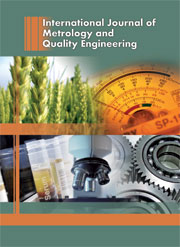No CrossRef data available.
Article contents
On hierarchical vs. non-hierarchical comparisons in metrologyand testing
Published online by Cambridge University Press: 19 April 2010
Abstract
The type of data treatment is different depending on whether the comparison, inparticular a key comparison of the MRA (mutual recognition agreement), is of thehierarchical or non-hierarchical type. This term does not mean a possible hierarchy amongthe participant laboratories; nor, in the opposite sense, a non-hierarchy among them likein the MRA key comparisons, but an intrinsic characteristic of the comparison measurand ordesign. It is a typical hierarchical comparison when the comparisoninvolves artefact standards. In this case, the summary parameters of the comparison arehierarchically higher than the input dataset. In case of non-hierarchicalcomparisons, the summary parameters are generally not of a hierarchicallyhigher level than the input dataset, because the comparison dataset can be considereddrawn from a single super-population. This happens, when a single standard is circulatedfor measurement; when the measured samples are all drawn from a single batch of areference material; when the standards are all realisations of a single condition – namelya physical or chemical state. This paper will discuss in detail these two categories.
Information
- Type
- Research Article
- Information
- Copyright
- © EDP Sciences 2010

